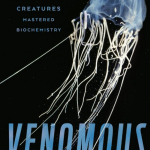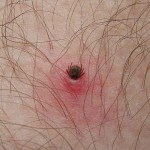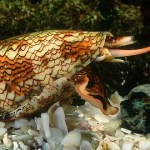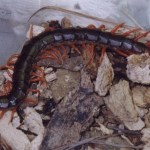venom
Photo of a Wagler's pit viper By Gunawan Kartapranata (Own work) [CC BY-SA 4.0 (http://creativecommons.org/licenses/by-sa/4.0)], via Wikimedia Commons
Platelets are important in the formation of blood clots. For this reason, antiplatelet medications are commonly prescribed for people at risk of developing blood clots, or who have already developed one. Many of the medications that are currently on the market to treat blood clots come with a risk for excessive bleeding and reduced platelet numbers. Researchers have now discovered an effective antiplatelet protein in snake…
You can read this book review, or you can just go HERE and listen to our interview with author Christie Wilcox. I promise you in advance that you will want to read her book!
But, if you want to read the book review, here it is...
Did you ever do anything that hurt, then you had to do it again and you knew it would still hurt, and you didn't like that? Like getting your teeth cleaned, or licking a nine volt battery. OK, maybe you didn't have to lick the nine volt battery, but you get my point.
When I was working in the Ituri Forest, in the Congo, taking a walk in the forest was one of…
Image of a tick stealing a meal from: www2.outdoorchannel.com
Ticks are blood-sucking arthropods that can act as vectors for various diseases in both animals and humans. A recent article published in Frontiers in Zoology summarizes findings that suggest ticks may also be considered venomous ectoparasites. For example, Ixodes holocyclus is a species of Australian tick whose saliva can induce paralysis in humans and animals. According to the new article, about 8% of known tick species can induce paralysis. Ornithodoros savignyi ticks even secrete a lethal…
Here I thought snails were just cute little creatures that liked to dine in my vegetable garden. You can imagine my surprise to learn there are also carnivorous snails....with venom. New research shows that conotoxin, isolated from cone snail venom, can numb pain. Conotoxin is also reportedly 100 times more potent than morphine at treating chronic nerve pain. The added benefit is that it does not appear to be addictive.
The snail to the rescue is the marine carnivorous cone snail common to the Indian Ocean and western Pacific. It hunts by stabbing prey and injecting a venom that paralyzes…
Image of a Chinese red-headed centipede from Wikimedia Commons.
Researchers from the Chinese Academy of Sciences and The University of Queensland have discovered a venom from centipedes capable of blocking pain more effectively than morphine!
According to the study authors, centipedes have appeared in the fossil records as far back as 430 million years. They are also one of the first land-dwelling creatures to use venom to incapacitate their prey as shown in the image above of a Chinese red-headed centipede (Scolopendra subspinipes mutilansis) snacking on a roach. The venom is…
It's a dinosaur tooth, and clearly one that belonged to a predator - sharp and backwards-pointing. But this particularly tooth, belonging to a small raptor called Sinornithosaurus, has a special feature that's courting a lot controversy. It has a thin groove running down its length, from the root to the very tip. According to a new paper from Enpu Gong of the Chinese Academy of Sciences, it was a channel for venom.
Thanks to a certain film that shall remain nameless, a lot of people probably think that we already know that some dinosaurs are venomous. But the idea that Dilophosaurus was…
The Northern short-tailed shrew is a small, energetic mammal that lives in central and eastern North America. The Mexican beaded lizard is a much larger reptile found in Mexico and Guatemala. These species are separated by a lot of a land and several million years of evolution, yet they share astonishing similarities. Not only are they both venomous, but the toxic proteins in their saliva have evolved in very similar ways from a common ancestor, converging on parallel lethal structures independently of one other.
This discovery, from Yael Aminetzach at Harvard University, shows that…
For the longest time, people believed that the world's largest lizard, the Komodo dragon, killed its prey with a dirty mouth. Strands of rotting flesh trapped in its teeth harbour thriving colonies of bacteria and when the dragon bites an animal, these microbes flood into the wound and eventually cause blood poisoning.
But that theory was contested in 2005 when Bryan Fry from the University of Melbourne discovered that a close relative, the lace monitor, has venom glands in its mouth. The discovery made Fry suspect that Komodo dragons also poison their prey and he has just confirmed that in…
...well, not really. But an exchange I had at Photo Synthesis with Andrew Bleiman of Zooillogix got me thinking about all the different insects that have charmingly envenomated me at one time or another.
Myrmecia piliventris, Australia
So I'm starting a meme called Things That Have Stung Me. The rules are simple:
List all the things that have stung you.
Bites don't count.
Pass the meme to 3 or more other bloggers you suspect have also been well-zinged.
Here are mine.
Things that have stung me:
Ants:
Pachycondyla verenae
Pachycondyla harpax
Pachycondyla villosa…
by Katie the lowly intern
Just when you started to feel comforted by the surge of popular culture embracing cephalopods on TV, apparel and porn, scientists spoon out a dose of brutal reality. Researchers from University of Melbourne, University of Brussels and Museum Victoria have revealed another terrifying fact about octopuses. It's not enough that they can squirt ink, have beaks, move by jet propulsion, change colors in seconds, turn their eyes to keep their pupils horizontally oriented, have no bones and most horrifically: have eight arms... but give very few hugs*.
The original octo-…



